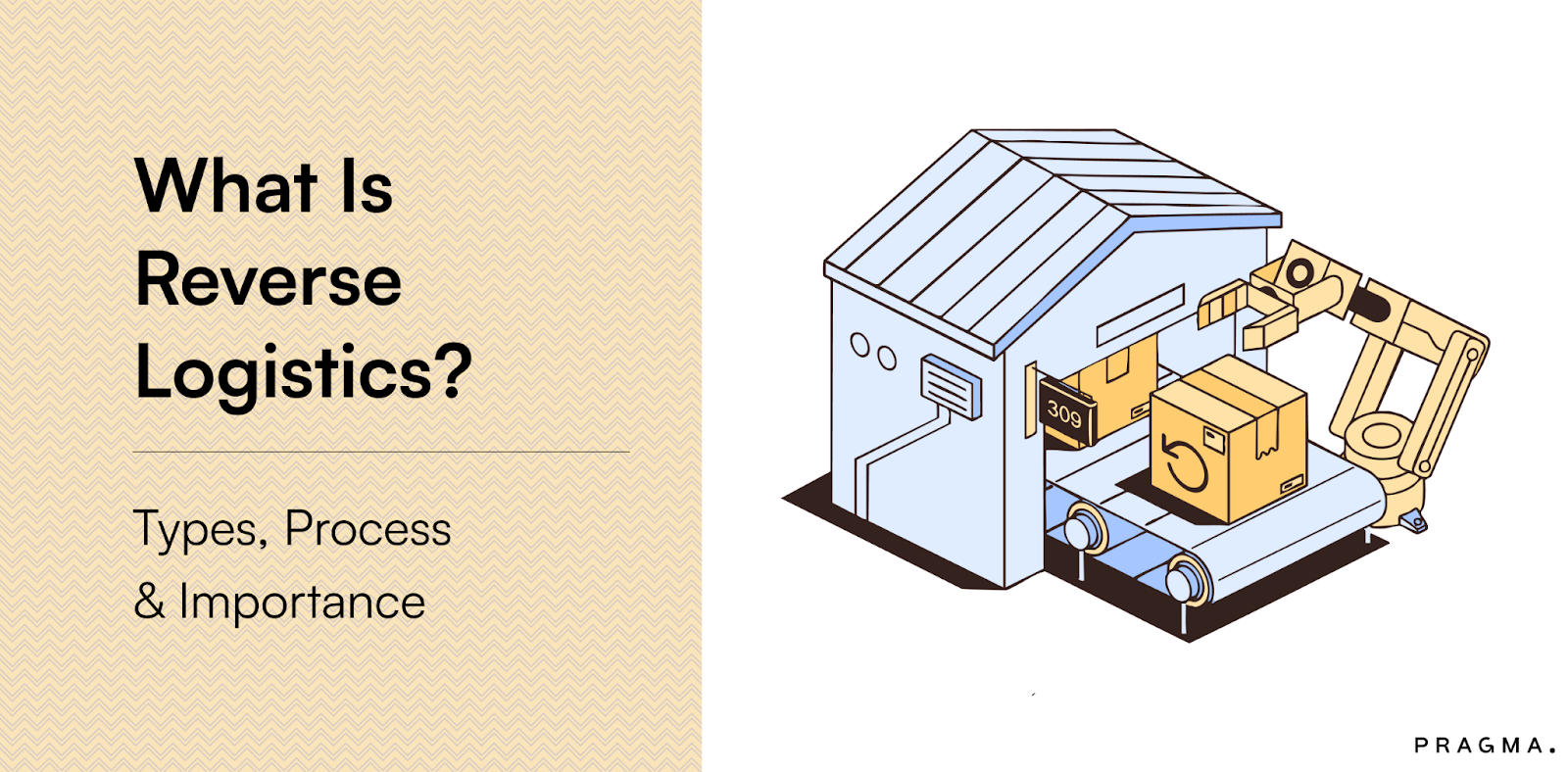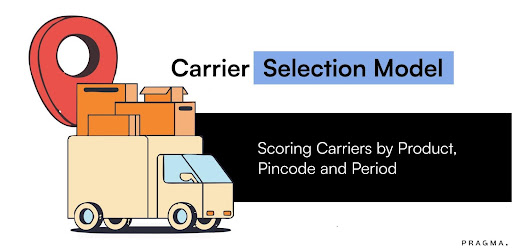With order volumes growing and customer expectations rising, a well-planned delivery management system has become a necessity rather than a luxury.
The delivery experience directly affects your brand metrics, as suggested by the PWC report
- Delivery problems account for approximately one-third of negative customer reviews
- Different markets have distinct priorities that your delivery system must address
A DMS brings together order processing, route planning, and real-time tracking in one place, giving visibility to your team, delivery personnel, and customers.
Your business can benefit regardless of whether you serve metropolitan areas with traffic congestion or smaller cities with different infrastructure challenges and achieve
- Higher customer satisfaction scores
- Better utilisation of your delivery fleet
- Fewer failed delivery attempts
This blog talks about what delivery management systems offer, how they function, and the practical ways a DMS helps improve your e-commerce operations.
What is a Delivery Management System?
A delivery management system helps streamline, automate, and optimise the delivery process from order placement to final fulfilment.
While focusing on the last-mile aspects of logistics and supply chain management, these systems provide a centralised framework for
- tracking orders
- Planning routes
- Dispatching drivers
- Monitoring deliveries in real-time
- Collecting proof of delivery
Delivery experience is becoming increasingly important for consumers across urban centres and smaller towns. As the PWC study "How India shops online" proves, 50% of consumers in metros and tier-1 cities prioritise quick delivery.
This is where a delivery order management system serves as the technological backbone for businesses with delivery operations, as it connects various stakeholders in the delivery ecosystem, including
- Businesses
- Dispatchers
- Delivery agents
- Customers
Through a unified platform that ensures proper communication and coordination throughout the delivery journey.
How An Online Delivery Management System Works
A delivery system operates as an integrated platform that connects different aspects of the delivery process through a series of interconnected modules, such as

- Order Processing and Assignment
The delivery journey begins when a customer places an order through an online platform or marketplace.
The delivery management software captures this order information and imports it into a centralised database.
Some solutions also automate this process through direct integration with e-commerce platforms, inventory management systems, and order-processing software.
Once an order enters the system, it undergoes initial processing where the delivery management system
- Verifies order details and delivery requirements
- Checks inventory availability
- Assigns priority based on delivery time windows
- Group orders by geographic zones for efficient distribution
The software then allocates orders to appropriate delivery agents based on various factors, including location, vehicle capacity, driver skills, and delivery timeframes.
- Route Planning and Optimisation
Route optimisation is a process where delivery management systems analyse multiple factors, including delivery locations, traffic patterns, and vehicle capacity.
When integrated with your inventory management system, it ensures that you have the right products available for efficient delivery scheduling.
- Delivery locations and distances
- Traffic patterns and real-time road conditions
- Vehicle capacity and limitations
- Driver schedules and availability
- Delivery time windows and customer preferences
- Service time at each stop
It then generates optimised routes that minimise travel distance, reduce fuel consumption, and ensure timely deliveries.
And unlike manual route planning, which might take hours and still produce inefficient results, delivery systems create optimised routes for dozens or even hundreds of deliveries in minutes.
Research indicates that "urban delivery faces logistical overload, regulations, and access restrictions, causing inconsistent experiences to the consumers."
A quality DMS helps you overcome these challenges through intelligent route planning that accounts for urban constraints.
For brands handling multiple deliveries daily, this route optimisation capability brings significant cost savings because drivers complete more deliveries per shift while consuming less fuel, and customers receive their orders within the promised time windows.
- Real-time Tracking and Visibility
Once deliveries are in progress, the DMS provides continuous visibility through GPS tracking and mobile applications, allowing for transparency for all stakeholders

This connectivity is a key component of modern e-commerce logistics that enables you to reduce the need for customers to contact support for delivery updates, minimise failed deliveries due to miscommunication, and create a more professional and reliable delivery experience.
Performance Analysis and Continuous Improvement
After deliveries are completed, the delivery software collects data to analyse performance and identify opportunities for improvement and generates reports and analytics on key metrics such as
- On-time delivery rates
- Average delivery times
- Successful first-attempt deliveries
- Customer satisfaction scores
- Driver performance and productivity
- Fuel consumption and vehicle utilisation
- Delivery costs per order or region
Key Features of an Effective Delivery Management System
A DMS combines several interconnected aspects that work together to improve the delivery process.

Order Management
Centralises all order information in a single platform, allowing your teams to process, track, and manage deliveries efficiently. It captures essential details, including
- Customer information
- Delivery requirements
- Product specifications
Good order management connects with your e-commerce platform to automatically import orders, eliminating manual data entry and reducing errors. It must facilitate order modification, cancellation, and rescheduling to accommodate changing customer needs.
Route Optimisation

Route optimisation is perhaps the most valuable feature of any delivery management system, where algorithms are used to determine the most efficient delivery routes based on multiple factors, including
- Vehicle capacity and limitations
- Driver availability and schedules
- Traffic patterns and road conditions
- Delivery time windows
- Stop sequence and priority
To reduce fuel costs, increase driver productivity, and help meet delivery time commitments. Your DMS must adapt to routes in response to real-time conditions like traffic or weather changes and re-optimise when new orders are added.
Real-time Tracking and Visibility
Your delivery system must provide real-time location tracking of delivery vehicles and orders through GPS technology.
Dispatchers must be able to monitor fleet movements, identify potential delays, and make adjustments as needed and your customers to track their deliveries in real-time, reducing uncertainty and support inquiries.
Driver Mobile Application
A user-friendly mobile application for drivers is another vital element of delivery management systems.
The app should guide drivers through their delivery routes, provide customer information, and enable them to update delivery status in real time through
- Turn-by-turn navigation
- Digital delivery instructions
- Customer contact details
- Electronic proof of delivery capabilities
- Communication tools to contact dispatchers
These apps eliminate the need for paper-based processes and allow your drivers to complete deliveries more efficiently while keeping the central system updated with accurate information.
Electronic Proof of Delivery
Electronic proof of delivery (ePOD) functionality helps your drivers to collect and record delivery confirmation digitally via
- Customer signatures
- Delivery photos
- Time and date stamps
- Notes about delivery conditions

It ensures a proper chain of custody to minimise false claims of missing or damaged deliveries, verifies successful deliveries and also creates documentation for additional accountability.
Delivery Exception Management
Even with proper planning, delivery exceptions occur. Your DMS should pack tools for handling these scenarios efficiently, such as
- Automated alerts for delayed deliveries
- Rescheduling options for failed delivery attempts
- Alternative drop-off location management
- Return management workflows
- Issue documentation and resolution tracking
So your team responds quickly to delivery problems, minimising their impact on customer satisfaction and operational efficiency.
Multi-delivery Options Management
Urban and rural Indian consumers have different delivery preferences, with 50% of urban consumers prioritising speed, while rural consumers often value reliability and affordability.
The right delivery management systems should support various delivery models, for example
- Standard home delivery
- Express/same-day delivery scheduling
- Click-and-collect options
- Designated safe drop locations
- Delivery time preferences
Regional Language Support
With India's linguistic diversity, supporting multiple regional languages can significantly improve the user experience for both customers and delivery personnel through
- Customer notifications and tracking interfaces
- Driver application interfaces
- Delivery instructions and communications
- Address formatting conventions for different regions
Language support also reduces communication barriers, particularly in tier-2 and tier-3 cities where English proficiency may vary, helping to expand e-commerce reach across diverse market segments.
Benefits of Implementing a Delivery Management System
A delivery management solution provides significant advantages for e-commerce brands, we’re talking about

Cost Reduction and Delivery Efficiency
Implementing a delivery management system helps you cut expenses in several ways.
- Routing algorithms create efficient delivery paths, reducing fuel usage by 15-30%.
- The automation of dispatching and route planning minimises the need for manual coordination, reducing labour costs and allowing staff to focus on more valuable tasks.
- Well-planned routes also mean less wear on delivery vehicles, decreasing maintenance expenses over time.
Additionally, better coordination between drivers and customers further decreases the number of unsuccessful delivery attempts, saving both time and resources.
Superior Customer Experience
The majority of Indian consumers expect excellent delivery service, and a delivery management system helps meet these expectations.

Customers appreciate receiving specific time slots instead of vague day-long delivery windows. Real-time tracking capabilities allow them to monitor their delivery status, reducing anxiety and supporting inquiries.
Automatic notifications keep customers informed about delivery progress and any changes, while flexible delivery options let them choose convenient times and locations.
PwC research shows that both urban and rural Indian customers prefer online ordering for recurring purchases, with reliable delivery being a significant factor in their decision-making.
Competitive Advantage
In the current market, the quality of the delivery experience is what truly sets brands apart.
With optimised routes enabling quicker fulfilment times, you can offer faster deliveries than competitors to build customer trust and encourage repeat purchases.
Common Challenges & How to Overcome Them
When deploying a delivery management system, you might face obstacles to successful adoption.

Integration Issues
Connecting new delivery systems with existing tech platforms can complicate your activities.
To overcome this, choose systems with pre-built integrations for popular platforms and look for open APIs that enable custom connections.
Opt for a phased type of implementation approach to minimise disruption to ongoing operations.
Data Quality Problems
The performance of any online delivery management system depends on accurate information.
Implementing proper data validation processes to identify and catch errors before they affect deliveries.
Use Pragma’s address verification feature to confirm delivery locations via WhatsApp communication to reduce failed attempts.

Last-Mile Complexity
The final delivery stage often presents difficulties, including traffic congestion and access restrictions.
Route optimisation that accounts for traffic patterns is a must-follow step that helps you overcome these challenges.
Map delivery zones with experienced drivers who know local conditions to improve delivery speed.
Pragma also helps you offer consumers alternative delivery options, such as collection points or specific time windows, to avoid delivery complications and accommodate potential unexpected delays.

Best Practices for Delivery Management System Implementation
Follow these guidelines to ensure your delivery management system DMS delivers maximum value to your DTC brand and customers.

Understand Your Requirements
Before selecting a system, map your current delivery process end to end to understand the flow of operations.
Try to identify inefficiencies and bottlenecks that need addressing.
Gather input from all stakeholders, including dispatchers, drivers, and customer service representatives, as they bring deeper perspectives on on-ground challenges.
Select the Right Solution
Choose a system that matches your specific business needs, considering your delivery volume and geographic coverage.
Evaluate how intuitive the system is for both office staff and drivers, as ease of use also impacts adoption rates.
Check integration capabilities with your existing systems to ensure easy data flow.
Verify customer support quality through references and reviews, as responsive support makes a significant difference during implementation.
Focus on Data Quality
Ensure your system works with accurate information by cleaning existing delivery data before migration.
Set up data governance protocols to maintain quality and verify address data using standardisation tools to avoid delivery errors.
Monitor and Improve
Implementation marks the beginning, not the end, of optimisation.
You must track key performance metrics consistently to measure improvements and identify areas needing attention.
Gather feedback from actual system users and customers to understand real-world performance.
It will help you refine routing and scheduling parameters over time based on actual results.
To Wrap It Up
With the help of a delivery management system, you can position your business to handle increasing order volumes efficiently while meeting customer’s varied expectations across different regions of India.
Using a DMS is all about building customer trust through consistent, reliable delivery experiences that keep shoppers returning to your platform.

FAQs (Frequently Asked Questions on Delivery Management System)
How to manage delivery using a DMS?
A delivery management system helps you track orders, plan routes, and monitor deliveries in real-time. It centralises all delivery operations, allowing you to dispatch drivers efficiently, provide customers with accurate ETAs, and collect electronic proof of delivery.
What is a delivery management plan?
A delivery management plan is a structured approach to handling the entire delivery process, from order processing to final fulfilment. It includes strategies for route optimisation, driver assignment, real-time tracking, and handling delivery exceptions to ensure a consistent customer experience.
What is a delivery process?
A delivery process encompasses all steps from when a customer places an order until it reaches their doorstep. This includes order verification, inventory checks, route planning, driver assignment, transportation, real-time tracking, and confirmation of successful delivery with documentation.
Talk to our experts for a customised solution that can maximise your sales funnel
Book a demo




.png)